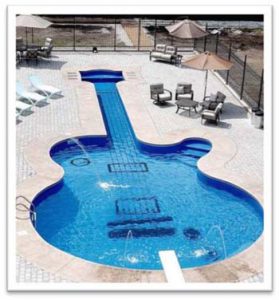
Adding Value to Your Home
Adding Value to Your Home. Like it or not, every homeowner must pay for routine home maintenance, such as replacing worn-out Air Conditioners or a leaky roof, but if you’re making improvements with the intention of increasing your home’s value. Some projects can be a wise investment while other’s aren’t and you may not be able to recoup your investment
Buyers can be unimpressed or unwilling to factor the upgrade into the purchase price.
As a homeowner, it will be important to choose the project carefully if you want the investment to pay off.
Here are 4 things you think will add value to your home, but may not.
1. Overbuilding for the Neighborhood
In an attempt to increase the value of a home, homeowners can make improvements to their property that unintentionally makes their home fall outside of the norm for the neighborhood. While an expensive remodel, such as converting one of your 3 bedrooms into your dream walk-in closet, will make you jump for joy, it won’t add and may actually decrease the resale value of your home if you’re in a neighborhood where the typical home has 3 + bedrooms.
In general, homebuyers do not want to pay $550,000 for a house that sits in a neighborhood with an average sales price of $350,000; the house will seem overpriced even if it is more desirable than the surrounding properties. The buyer will instead look to spend $350,000 in a $350,000 neighborhood. The house might be beautiful, but any money spent on overbuilding will be difficult to recover.
2. High-End Upgrades
Putting stainless steel appliances in your kitchen or imported tiles in your entryway may do little to increase the value of your home if you still have vinyl flooring in the bathrooms and shag carpeting from the 70’s in the bedrooms. Upgrades should be consistent to maintain a similar style and quality throughout the home. A home that has a beautifully remodeled kitchen can be viewed as an open project if the bathrooms remain functionally obsolete. The remodel, therefore, might not fetch the high return it would if the rest of the home were brought up to the same level. High-quality upgrades generally increase the value of high-end homes, but not necessarily mid-range houses where the upgrade may be inconsistent with the rest of the home or the neighborhood.
3. Invisible Improvements
Invisible improvements are those expensive projects that you know make your house better and more energy-efficient, but nobody else would notice – or likely care about. A new plumbing system or HVAC unit might be necessary, but don’t expect to recover these costs when it comes time to sell. Homebuyers simply expect these systems to be in good working order and will not pay extra just because you recently installed a new heater. This type of improvement will help your home sell over the competition, but it’s better to think of these improvements in terms of regular maintenance, and not an investment in your home’s value.
4. Extensive Landscaping
Homebuyers may appreciate well-maintained or mature landscaping, but don’t expect your home’s value to increase because of it. A beautiful yard may encourage potential buyers to take a closer look at your home, but will likely not add to the selling price. Many buyers can view elaborate landscaping as a maintenance burden despite its beauty and as a result, are not likely to consider it when placing value on your home.
